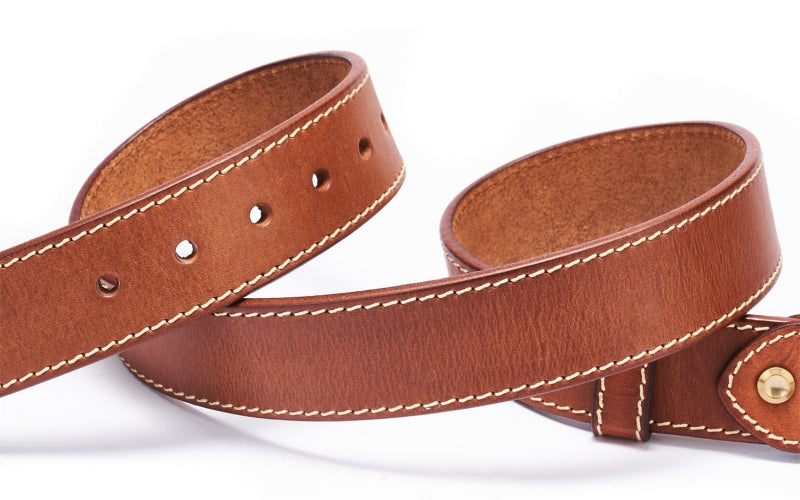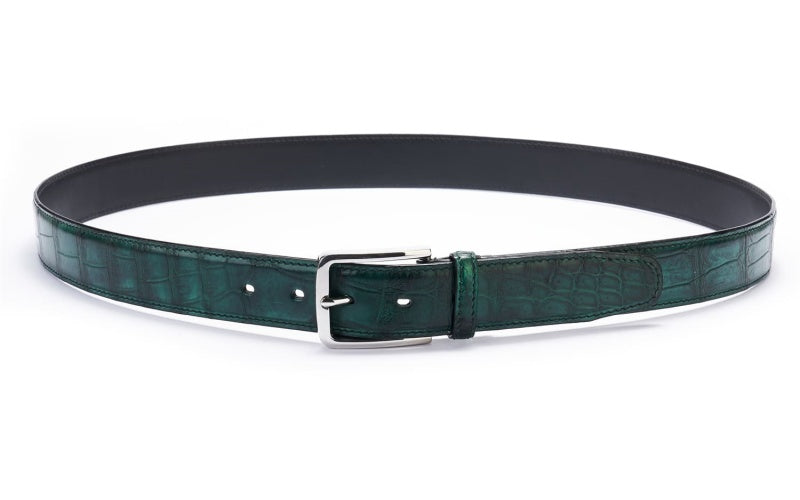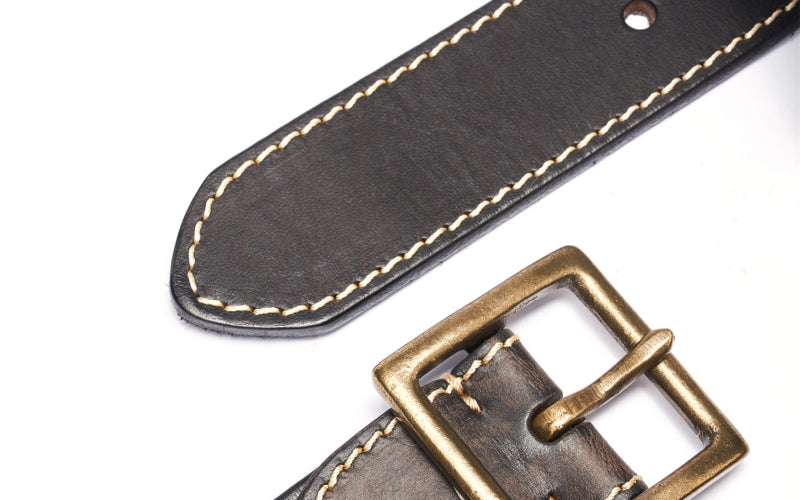
How to Tell if a Belt is Full Grain Leather Like A Expert
Let’s talk about your belt. You paid good money for it. You’ve worn it to job interviews, first dates, and that awkward family reunion where Uncle Bob debated conspiracy theories. But now you’re side-eyeing it, wondering: “Is this even real full grain leather, or did I get scammed?”
As someone who’s worked in leathercraft (and ruined enough belts to fill a graveyard), I’m here to help you play detective—no magnifying glass required.
We’ll cover the sneaky tricks brands use, the red flags to spot, and why your nose might be your best ally. Let’s dive in before you accidentally buy another “genuine leather” disappointment.
1. The “Full Grain” Lowdown: Why It’s the Holy Grail
First, let’s decode the hype. Full grain leather is the top layer of the hide, untouched by sanding or buffing. It’s like the uncut version of a movie—raw, authentic, and packed with character.
Why it’s superior:
-
Durability: Survives apocalypses, toddlers, and your dog’s chew toys.
-
Patina: Ages like a fine wine (or George Clooney), developing a rich, unique sheen.
-
Breathability: Doesn’t trap sweat like plastic-y “genuine leather.”
Why brands fake it: Full grain is expensive. Cheaper belts often use corrected grain (sandpapered and painted) or bonded leather (scraps glued together). It’s the difference between a steak dinner and a gas station hot dog.
2. The Visual Test: Play “Spot the Flaws”
Full grain leather is supposed to look imperfect. Here’s what to hunt for:
-
Natural Marks: Scars, insect bites, and wrinkles are good. If the surface looks like a TikTok filter (flawless and airbrushed), it’s probably corrected grain.
-
Pores: Hold it up to light. Real full grain has visible pores, like skin. Fake leather? Smooth as a marble countertop.
-
Edges: Check the belt’s edge. Full grain edges are rough, fibrous, and often unfinished. Cheap belts have painted or plastic-coated edges to hide the truth.
Pro tip: Compare it to a known full grain item (like a high-end leather jacket). If your belt looks too perfect, it’s sus.

3. The Touch Test: Channel Your Inner Sensitive Poet
Close your eyes. Feel the leather. Full grain should:
-
Feel uneven: Textured, with subtle bumps and ridges.
-
Warm up: Fake leather stays cold; real leather absorbs your body heat.
-
Flex naturally: Bend the belt. Full grain creases softly, like a well-worn book. Cheap leather? It wrinkles like a crumpled receipt.
Red flag: If it feels like plastic or vinyl, you’ve been duped. (Unless you’re into that—no judgment.)
4. The Smell Test: Sniff Out the Truth
Your nose knows. Real full grain leather smells earthy, musky, and faintly sweet—like a campfire mixed with a saddle shop.
Fake leather smells like:
-
Chemicals: Harsh, plasticky, or like a new car interior.
-
Nothing: If it’s odorless, it’s probably PU (polyurethane) pretending to be leather.
Warning: Some faux leather is scented to mimic the real deal. Sneaky, right?
5. The Water Test: Make It Sweat
Drop a tiny water bead on the belt.
-
Full grain: Absorbs water slowly, leaving a dark spot that fades as it dries.
-
Fake leather: Water sits on top like a lazy pond or beads up.
Caution: Don’t drown your belt. A drop is enough—unless you’re into waterboarding accessories.
6. The Price Check: Is It Too Good to Be True?
Let’s get real. Full grain leather belts cost $80–$300+. Why? It’s labor-intensive, and the hides are premium.
If the price is:
-
Under $50: Run. You’re getting corrected grain or bonded leather.
-
$50–$80: Risky. Might be split grain (the fuzzy layer under full grain) pretending to be fancy.
Beltley’s secret: Our Full Grain Collection starts at $90. No corners cut, no lies told.
7. The Label Decoder: Don’t Fall for Buzzwords
Brands love to confuse you. Here’s what common terms really mean:
-
“Genuine Leather”: Lowest grade. Made from shredded leftovers. Avoid.
-
“Top Grain”: Sanded and refinished. Decent, but not full grain.
-
“Made with Full Grain Leather”: Check if it’s just a sliver on the back (looking at you, designer monogram belts).
Fun fact: There’s no legal standard for “full grain.” Shady brands exploit this.
8. The Burn Test (For the Bold and Reckless)
Disclaimer: Don’t try this in a store unless you want to get tackled by security.
-
Snip a tiny piece from the belt’s end.
-
Light it with a lighter.
-
Full grain: Smells like burnt hair (collagen in the hide).
-
Fake leather: Melts, smells like plastic, and probably curses you.
9. The Longevity Test: How It Ages
Still unsure? Wear the belt for a month. Full grain:
-
Develops a patina: Gets richer and darker.
-
Softens: Like your heart after a rom-com marathon.
-
Shows scars: Natural marks become more pronounced.
Fake leather? It’ll crack, peel, or fade faster than your New Year’s resolutions.
Why Beltley Swears by Full Grain Leather
At Beltley, we’re obsessed with full grain because:
-
It ages with you: Each scratch and shine tells your story.
-
No toxic finishes: Our vegetable-tanned belts are eco-friendly.
-
Built to last: We’d rather sell you one belt forever than 10 flimsy ones.
Final Tip: Trust Your Gut (and This Blog)
If a belt’s marketing feels flashy but vague (“luxe artisan leather!”), dig deeper. Ask the brand:
-
“Is this full grain or top grain?”
-
“Is the edge painted or raw?”
-
“Can I see a close-up of the pores?”
If they dodge the questions, swipe left.
Still paranoid about your belt? Drop a comment below or slide into our DMs. And if you’ve got a belt horror story, spill it—we’ll bring the virtual tissues (and maybe a discount code).








